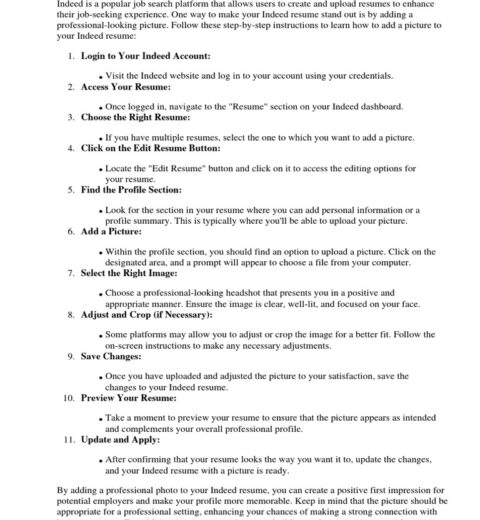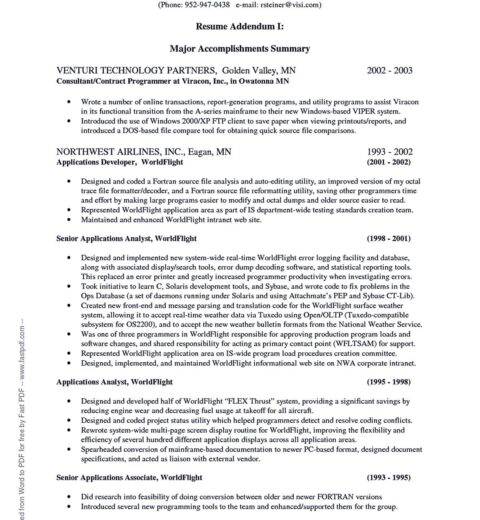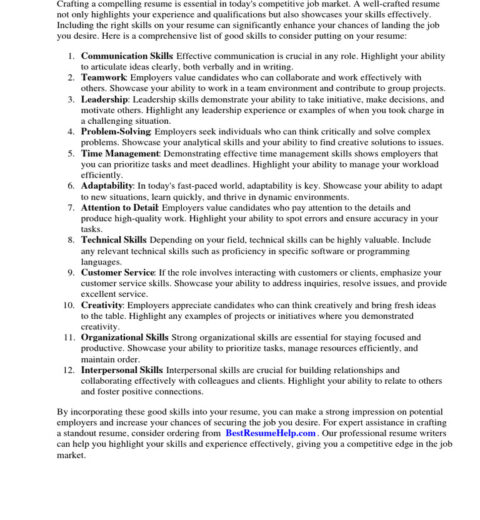Introduction
In an increasingly competitive job market, crafting an impactful resume becomes paramount. One of the most contentious issues applicants face is determining how far back to go when detailing their work history. While some job seekers may opt to include every position they’ve held since their first job, others may choose to limit their experience to the last decade. Striking the proper balance is essential, as your choices can significantly influence hiring managers’ perceptions. How do you navigate these turbulent waters? Let’s delve into the intricacies of timeline selection on your resume and unearth common pitfalls to avoid.
The Art of Resume Timing
Before addressing how far back to go, it’s vital to understand the overall purpose of a resume. A resume is more than just a chronological account of your professional life; it is a marketing tool designed to showcase your most relevant skills and experiences. Consequently, the timeline you present should not only emphasize your qualifications but also align with the role you seek.
Typically, candidates should consider including the last 10 to 15 years of employment history, particularly in industries that evolve rapidly, such as tech and marketing. However, this timeframe may differ based on several factors, including your career stage, industry norms, and the specific position for which you’re applying.
Factors Influencing Your Resume Timeline
When deciding how far back to include experiences, consider the following:
- Industry Requirements: While some fields value extensive experience, others prioritize recent advancements and up-to-date knowledge. For instance, technology-driven sectors often require skills that have evolved significantly in the past few years, making it crucial to focus on recent roles.
- Length of Career: For those in the early stages of their careers, including part-time roles, internships, and relevant coursework may be beneficial, even if they extend beyond the standard timeline. Conversely, established professionals may consolidate their achievements to focus on the most pertinent experiences.
- Job Relevance: Tailor your resume to mirror the specific skills and experiences that are most relevant to the job description. If an older position directly correlates with the responsibilities outlined in the job ad, including it may bolster your candidacy.
Common Mistakes to Avoid
Ascertaining how far back to go is fraught with potential missteps. To position yourself for success, be mindful of these common errors:
- Overloading with Irrelevant Details: Including every position you’ve ever held can clutter your resume and obscure the strengths you wish to highlight. Consider creating a focused narrative that underscores your accomplishments without unnecessary information that could divert attention from your key qualifications.
- Chronology Confusion: Be wary of the temptation to backtrack excessively in your job history. While it might seem logical to list every position, showcasing roles from twenty years ago often detracts from the more pressing, contemporary qualifications that hiring managers seek.
- Gaps in Employment: While it’s crucial not to pad your resume with outdated positions, employment gaps can often raise red flags. If you have extended periods without work, consider using a functional resume format or including volunteer work, freelance projects, or education to fill these gaps without reverting to irrelevant earlier roles.
The 10-Year Rule: Is It Universally Applicable?
The ten-year rule serves as a guideline but is not engraved in stone. For professional fields where changes occur swiftly, such as technology or digital marketing, hiring managers often expect candidates to highlight only recent positions. In contrast, those in fields like academia, law, or engineering may benefit from an expansive presentation that encompasses relevant positions spanning much longer timelines.
Moreover, candidates who have held senior-level roles may need to consider emphasizing leadership and strategic responsibilities over a broader timeline. Thus, while the ten-year baseline provides a framework, evaluating applicability within your unique context is crucial.
Executing a Targeted Resume
As you contemplate the ideal timeline, consider these actionable strategies to enhance the quality and relevance of your resume:
- Tailor for Every Application: Customize your resume for each role, focusing on the skills and experiences that are particularly relevant to the job description. Highlight roles that showcase your achievements, using quantifiable metrics where applicable.
- Prioritize Impactful Narratives: Move beyond listing responsibilities and articulate the impact you had in each role. Use strong action verbs and provide details about your contributions to give a vivid picture of your capabilities.
- Maintain a Contemporary Format: Use a clean, professional format that appeals to modern sensibilities. Avoid over-designing your resume; clarity and readability should remain your top priorities.
Conclusion
Your resume is invaluable in presenting a curated narrative of your professional journey. By avoiding common mistakes and adopting a thoughtful approach to constructing your timeline, you can effectively craft a document that piques interest and compels hiring managers to engage. The question of how far back to go may be influenced by multiple factors, but in the end, it’s a delicate balance of relevance, impact, and clarity that will ultimately engage your audience and open doors to promising opportunities.




